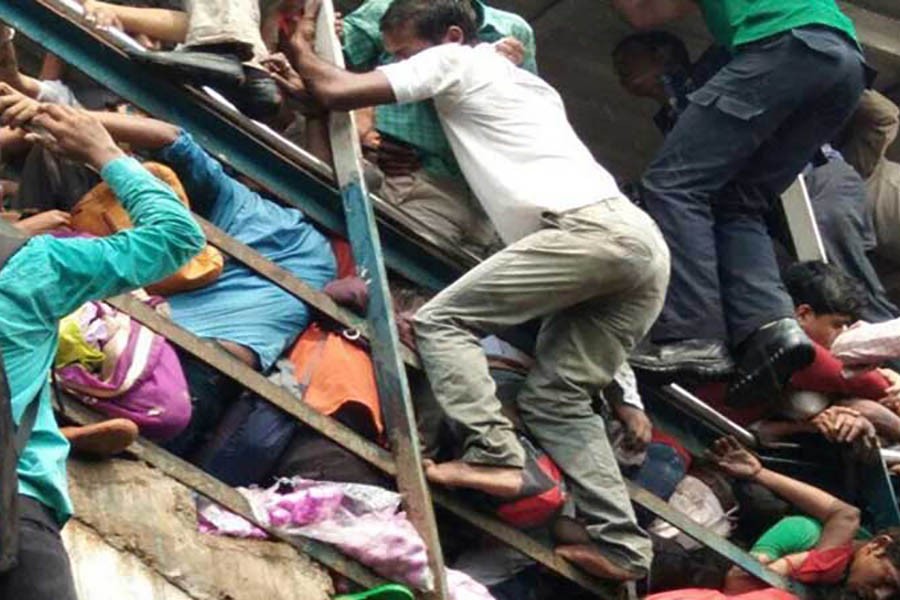The hysteric rush and jostling for an exit or entry leading to mindless deaths and injuries is not unique to Bangladesh. Given the tragic incident's troubling recurrence these days, some might brand the country as stampede-prone. It will be gross injustice. Stampedes have been occurring since 66 AD. In that year, hundreds of Jew pilgrims are said to have been killed in a stampede in Jerusalem. It resulted from a fracas sparked by rude comments made by Roman soldiers present there against the Jews. Stampedes have been a periodic feature in human history. Their causes and natures have changed remarkably over time. But they continue to dog mankind. In the 21st century up to 2017, nearly 80 major stampedes have reportedly occurred worldwide. In today's poorer societies, the rush to avail something, given for free, ahead of others is one of the reasons for stampede casualties. Bangladesh is one of them.
The stampede that killed eight women and one child in Chittagong's Satkania on May 14 tells a story similar to those that have unfolded in the past. It gives one an uncanny feeling that the May 14 stampede appears to be a re-enactment of another such incident which occurred in the port city last year. That frenzied jostling witnessed 10 deaths. Both the tragedies centred on events related to solemn religious rites. The earlier one was organised as part of the Qulkhwani (post-funeral ritual) of a former Cittagong mayor. It arranged special lunch for people from all segments of society. The later one involved distribution of Iftar-making ingredients and new clothes among underprivileged women for Ramadan and Eid. It is implied that charity-linked events, especially those related to religious observances, are purely driven by a noble intention, piety to be precise. To the distress of many, these purely righteous activities nowadays have started being tainted by scores of ills. They include mismanagement, lack of experience, and negligence on the part of a few. Pious intentions of the organisers of the two charity assemblages are beyond doubt. But unavoidable circumstances may have cropped up suddenly with dreadful force and enormity. Most of these events going awry ensue from the organisers' incapability to assess them in their entirety. This necessitates keeping in view every big and small feature of an event involving large crowds. A prior assessment of capability and logistic strength stands out as an imperative. This can remarkably cut down on the hazard of turnouts in excess of the anticipated number.
In the last one and half decades, stampede deaths and injuries at programmes marking distribution of zakat clothes have been a common scenario in the country. Scores of poverty-stricken people have met tragic deaths in the melees breaking out at the overflowing venues. These mishaps drew a lot of condemnation for the ill-prepared organisers.
Stampedes cannot be fully avoided at overcrowded places. The vulnerable spots include sport events, musical shows, weak structures holding large crowds, pilgrimage sites, festival grounds etc. Some common human traits normally trigger stampedes. These include, in particular, the irresistible urge to escape some presumed dangers and to get something faster and in more quantity. Rumours and panic are also held responsible for stampedes. Due to their frenzied nature, stampedes can hardly be dealt with routine disciplinary measures. Here emergency preparedness is of utmost importance. It can avert a lot of these tragedies.


